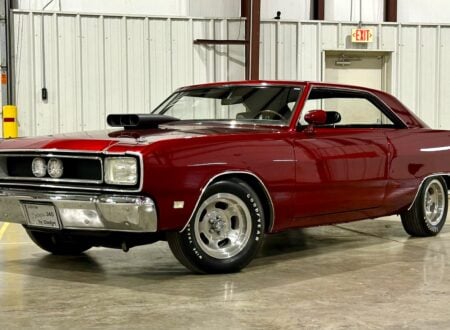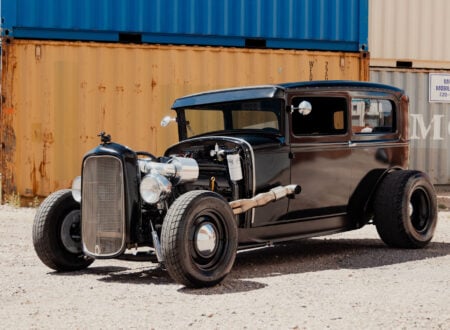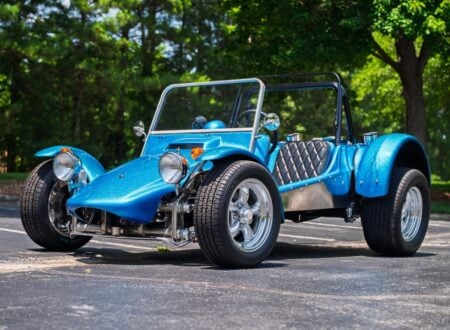This is an original Bowler prototype built using the firm’s all-aluminum Cross Sector Platform (CSP) chassis, you can see the chassis itself in the image below, but long story short it’s an entirely modern design developed in-house at Bowler to be suitable for everything from high-speed Dakar desert racing to military use.
The Bowler Cross Sector Platform (CSP) Chassis
The CSP chassis is far more complex, modern, and rigid that the simple steel ladder frame chassis used on the Land Rover Defender and on its Series 1, 2, and 3 forebears. Bowler had been developing high-performance Land Rovers for decades but one of the most restrictive elements was always the old chassis design.
The new Bowler CSP chassis was built to accommodate Independent front and rear suspension with up to 27cm (10.6 inches) of wheel travel. It’s also made from lightweight aluminum alloy, and when paired with the full internal roll cage it forms an incredibly rigid structure not dissimilar to a space frame.
The vehicle you see here is the Bowler CSP V8 Prototype “P2”, it was essential in developing the new chassis and on integrating the 542 bhp 5.0 litre Jaguar V8 engine. The final package was so impressive that it was shortlisted by Autocar Magazine as one of their Top Ten Driver’s cars of the year in 2019, alongside cars like the McLaren 600LT, Lamborghini Huracan Evo, and the Mercedes-Benz AMG GT 63S.
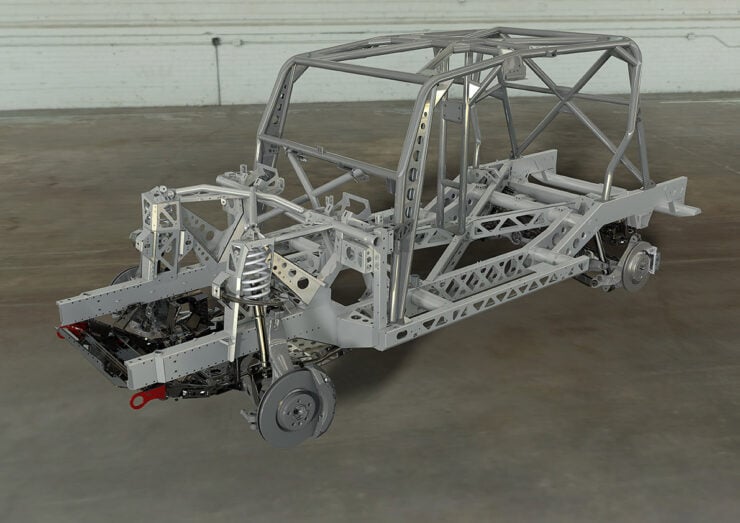
Above Image: The all-aluminum Bowler Cross Sector Platform (CSP) chassis, with the FIA-approved roll cage included it forms a rigid structure almost like a spaceframe chassis.
Bowler have been building high performance Land Rovers since the 1980s and they enjoyed a friendly relationship with the UK carmaker. It was after the release of the CSP chassis that the relationship grew stronger, up to the point that Jaguar Land Rover acquired Bowler in late 2019.
The Bowler CSP V8 Prototype “P2” would form the underpinnings of the new Project CSP 575, the official continuation of Land Rover Defender production in heavily revised form, and now carrying the brand name Bowler rather than Land Rover.
Some have argued that the Bowler CSP 575 is far closer to what Land Rover should have released as the new Defender, though perhaps with some slightly less intense engine options. That said, the mass-market appeal of such a vehicle would likely have been limited.
The Bowler CSP V8 Prototype “P2”
When it was first built the Bowler you see here was fitted with a slightly more tame turbocharged 3.0 litre Land Rover V6 in Bulldog configuration. It was later reworked by the factory to operate as a prototype/test bed for the 542 bhp 5.0 litre Jaguar V8 with 516 lb ft of torque, and it remains in this configuration now.

Above Image: The flared wheel arches are needed to accommodate the considerably wider track width over the original Land Rover Defender.
Power is sent back into an eight-speed ZF automatic gearbox with a Bowler transmission cooler, and from there into a torque bias centre differential, complimented by an open differential to the front and an E-Diff to the rear. The track width is notably wider than the standard Defender, and the absence of visible diffs is a good indication than this is no ordinary Land Rover.
The vehicle rides on competition specification remote-reservoir Bilstein shock absorbers and coil springs with the above mentioned 27cm (10.6 inches) of suspension travel, and it’s fitted with ventilated disc brakes with Brembo calipers on all four wheels. The wheels are graphite six-spoke 18-inch Compomotive units shod with Cooper Discoverer A/T All-Season tires.
This Bowler is fitted with an FIA-specification 90 litre fuel cell, MSA/ FIA certified roll cage and twin competition type buckets seats, both of which are fitted with six-point competition harnesses.
If you’d like to read more about it or register to bid you can click here to visit the listing on RM Sotheby’s. It’s due to cross the auction block on the 13th of February and it’s offered without reserve, direct from the collection of former Bowler Motors Limited Director Richard Hayward.
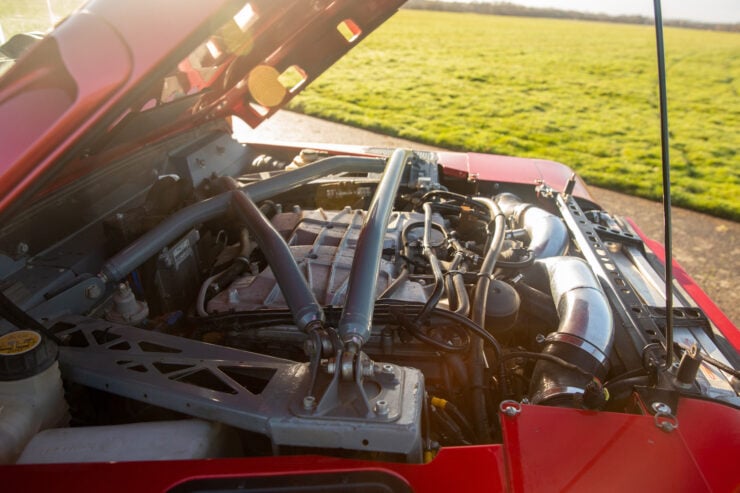




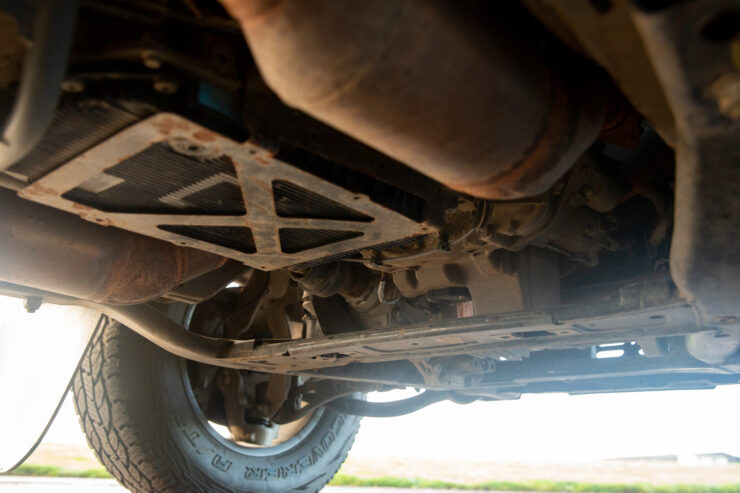

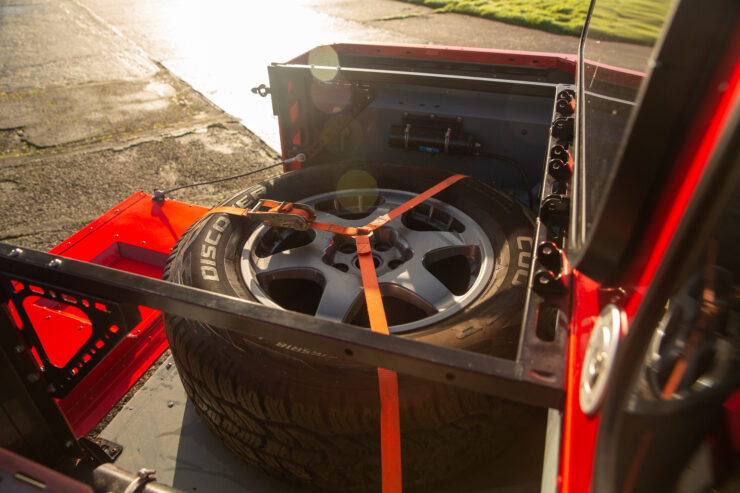
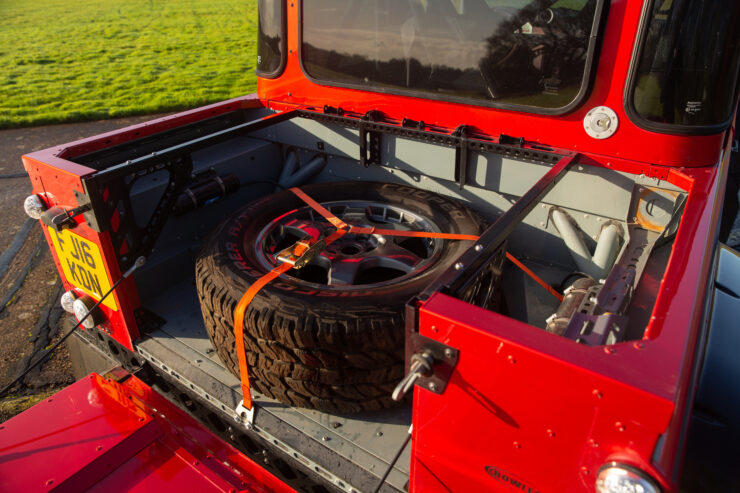

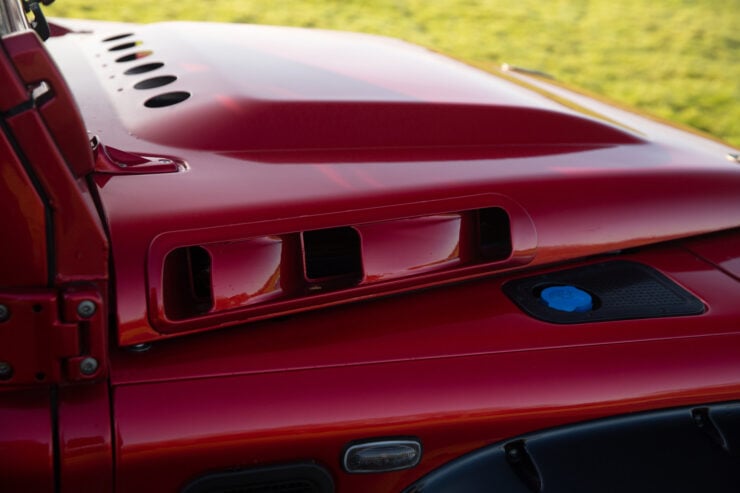
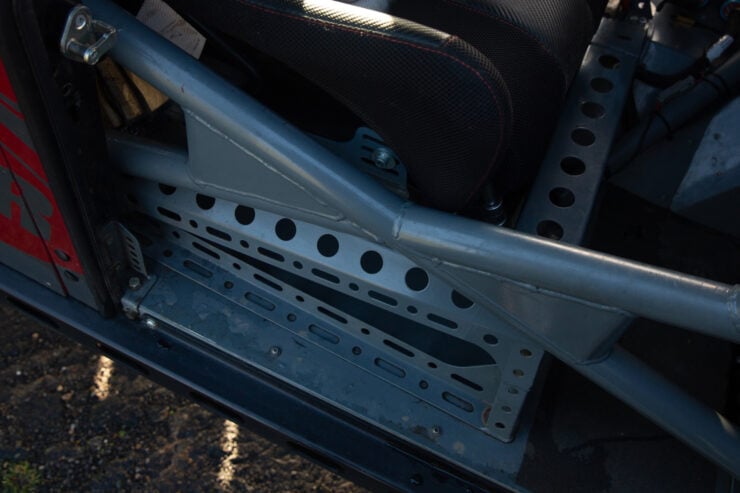
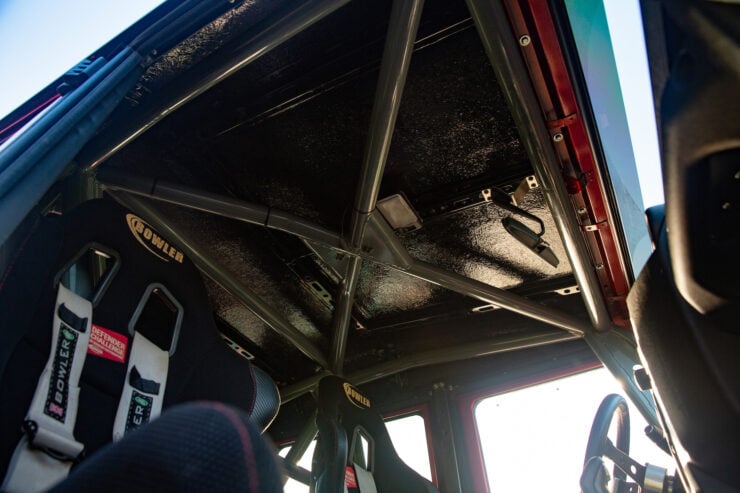
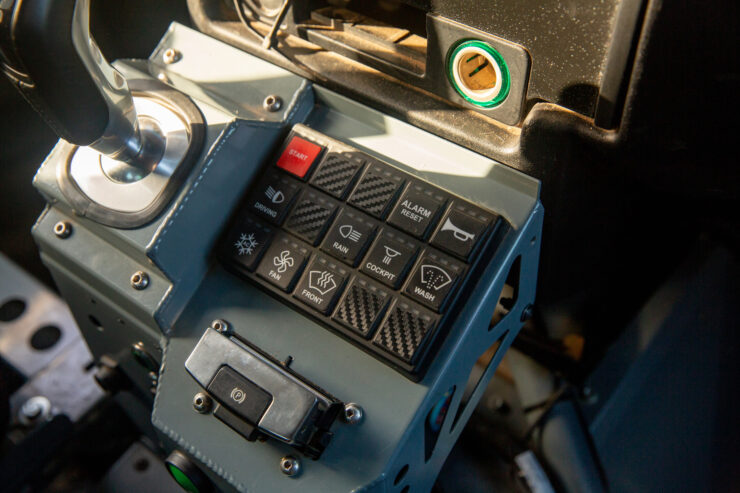

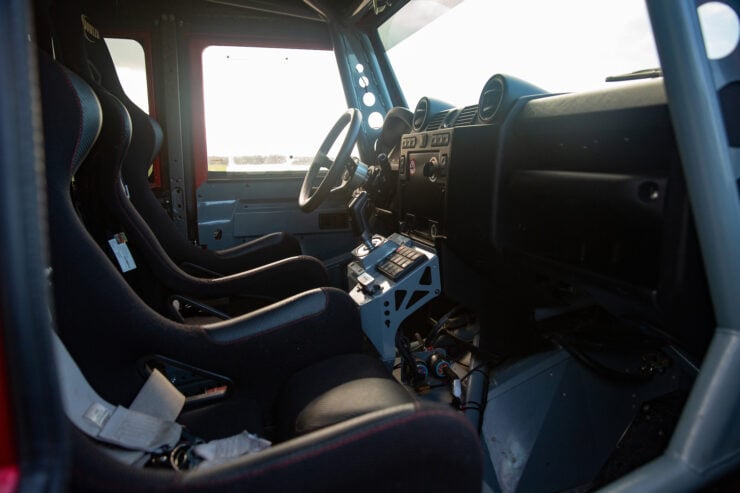
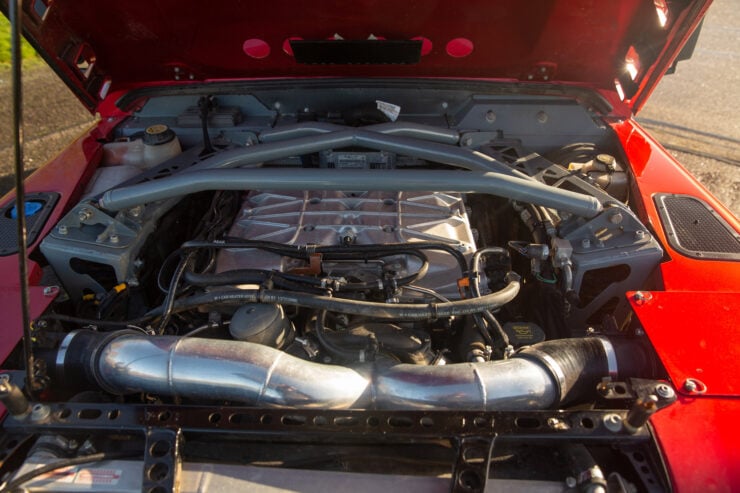
Images: Tom Gidden ©2020 Courtesy of RM Sotheby’s



